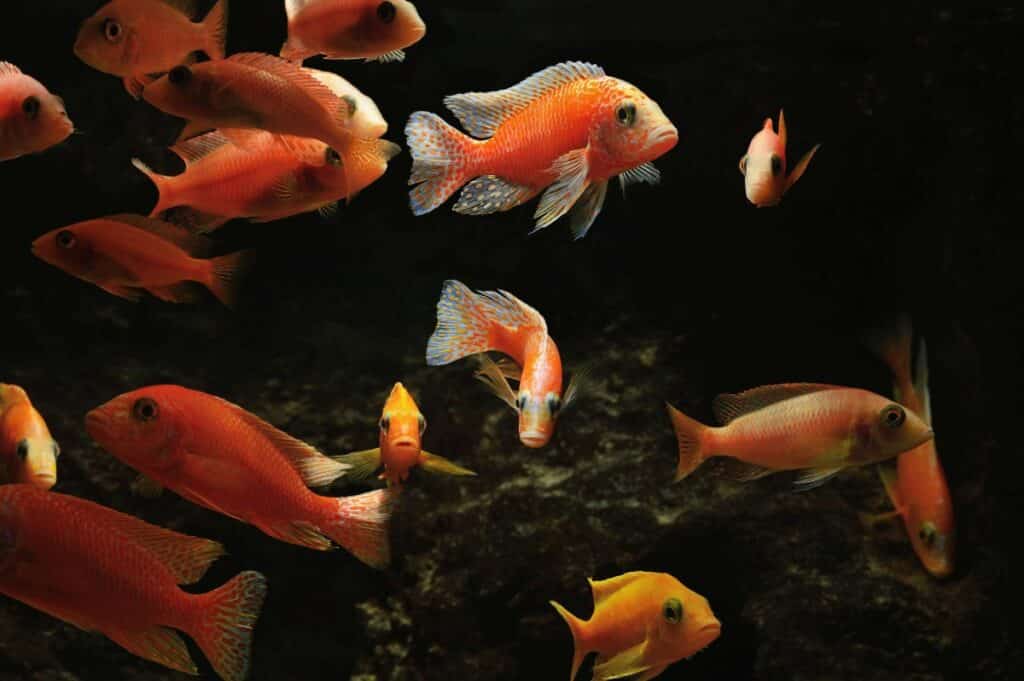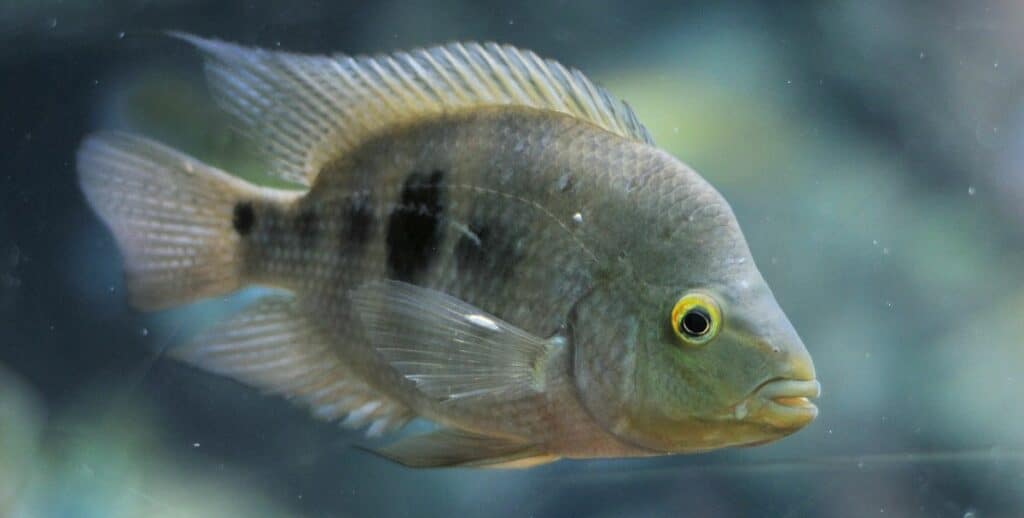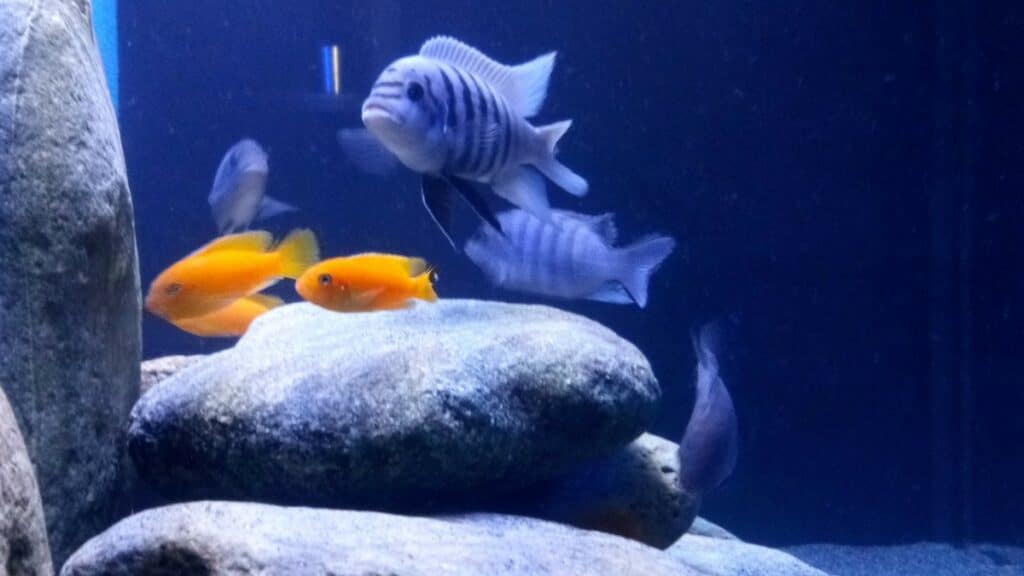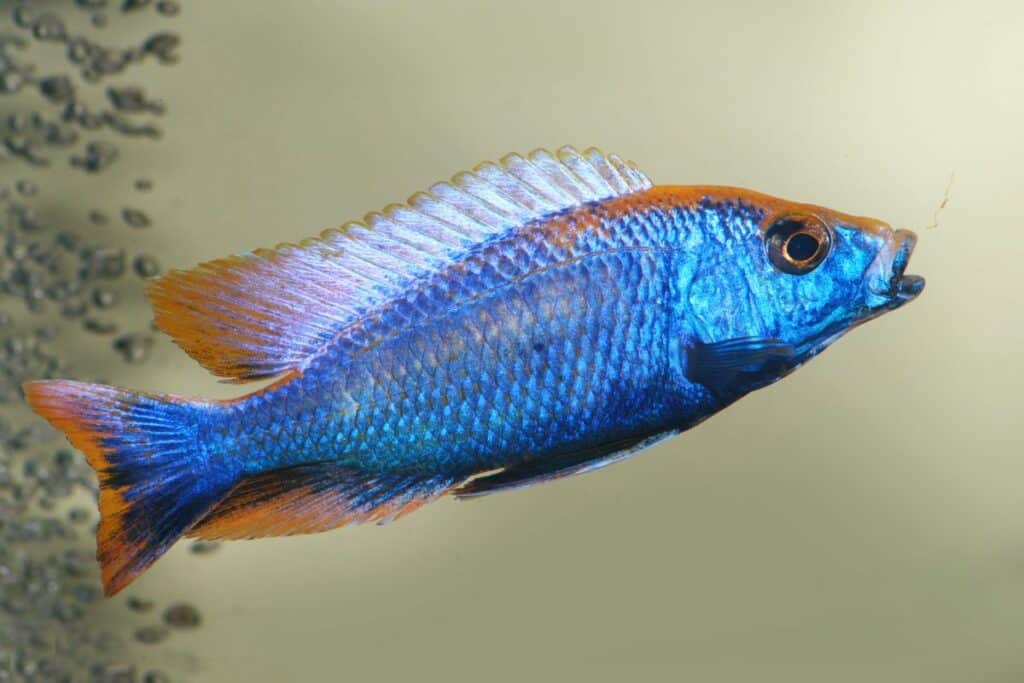the essentials in brief
Malawian perch average about 10 to 15 centimeters in size, although the exact size can vary depending on the species and individual conditions. Read more here...
A constant water temperature between 24 and 28 degrees Celsius is ideal for the well-being of the Malawi perch. This temperature corresponds to the natural conditions in Lake Malawi and promotes the well-being and activity of the fish. Read more here...
The fascinating world of Malawi perch is rich in diversity, with over 1.000 different species identified to date. However, research and discovery of new variants is still ongoing, which means that the number of known species is constantly growing. Read more here...
Would you like to enrich your underwater world with bright colors? Then Malawi cichlids are just right for you! These fascinating fish are native to Africa's Lake Malawi, one of the largest and most biodiverse lakes in the world. In the course of evolution, they have developed into a variety of shapes and colors that inspire every aquarist. In this blog post you will learn everything you need to know about Malawi cichlids.
Overview of Malawi cichlids

Malawi cichlids are a group of freshwater fish in the cichlid family (Cichlidae). Cichlids are a highly diverse and adaptable family of fish found in many tropical and subtropical waters around the world. They are characterized by their intelligence, their social behavior and their brood care. The Malawi cichlids are a subgroup of cichlids that live exclusively in Lake Malawi. Lake Malawi is an approximately 580 km long and up to 700 m deep rift lake in the East African rift valley system. It is one of the oldest lakes on earth and is home to more than 1000 different species of fish, of which around 90 percent are endemic, i.e. only found in this area. Most of these fish are Malawi cichlids, which can be divided into different groups:
mbuna: That means in the language of the locals “rock fish” and refers to the cichlids that live in the rocky shore zones of the lake. They feed mainly on algae and small animals, which they graze on the rocks. They are very territorial and often form large groups with a strong hierarchy. Mbunas are usually very colorful and often have stripes or dots on their body. Examples of Mbuna are Pseudotropheus, Labidochromis or Melanochromis.
Non-Mbuna: These are cichlids not belonging to the Mbuna and are found in other habitats of the lake. They feed mostly on plankton, insects or small fish and often have a slimmer body shape than the mbuna. They are usually less territorial and form smaller groups or pairs. Non-Mbuna are often less colorful than the Mbuna, but are still very attractive. Examples of Non-Mbuna are Aulonocara, Copadichromis or Nimbochromis.
Haplochromis: This is a collective term for all cichlids that belong neither to the Mbuna nor to the Non-Mbuna and mostly occupy an intermediate position between these two groups. They live in different habitats of the lake and have different feeding habits. They are often very variable in their coloring and can change color depending on their mood or environment. Examples of Haplochromis are Protomelas, Placidochromis or Sciaenochromis.

Adaptations to life in Lake Malawi:
The habitat in Lake Malawi is characterized by rocky structures that offer numerous hiding places and caves. The Malawian perch has adapted to this environment over time and developed a specific anatomical structure. Their fins are powerful, allowing them to maneuver dexterously among the rocks. This allows them to mark their territory and catch prey at the same time.
Colors and body markings: One of the most striking characteristics of the Malawi perch is their colourfulness. The males are often much more colorful and intensely colored than the females. These bright colors are not only used for beauty, but also play an important role in mate selection and territorial defense. Some species have distinctive body markings such as stripes, dots or patterns that make them even more attractive.
Peculiarities of the males: Male Malawian perch are known for their impressive courtship rituals. To attract the attention of females, they exhibit impressive behaviors in which they display their colors and fins. Dominant males try to drive off rival males to defend their territory and mating rights.
Protective behavior of the females: The females, on the other hand, are caring mothers and show strong protective behavior towards their breeding grounds. After laying their eggs, they closely guard the brood and defend it against possible threats.
How do I set up my aquarium?
If you want to keep Malawi cichlids, you should make sure that your aquarium comes as close as possible to the natural conditions. Above all, this means that you create enough space for your fish, because Malawi cichlids can be between 10 and 30 centimeters long depending on the species and need a lot of freedom of movement. As a rule of thumb, you need at least 300 liters of water for a group of Malawi cichlids. The larger the aquarium, the better, because more species and individuals can be kept and the potential for aggression is reduced.
Note: When setting up the aquarium, make sure that there is enough space for filtering and changing the water. Lake Malawi cichlids are very sensitive to poor water quality and therefore need good filtration and regular water changes. You should change 30 to 50 percent of the water at least once a week and check the water values.
In addition to the size, the setup of the aquarium is also important. Lake Malawi cichlids need two things in particular: stones and sand. Rocks offer the fish protection, retreats and territories. Therefore you should equip your aquarium with many stones, which you arrange into caves and crevices. Make sure that the stones are stable and cannot tip over. Sand provides the fish with a natural substrate for digging and feeding. Therefore you should cover your aquarium with fine sand that has no sharp edges. Avoid gravel or other coarse substrate that could injure the fish.
What Do Lake Malawi Cichlids Eat?

Depending on the species, Lake Malawi cichlids have different feeding habits that must be taken into account when feeding them. Most Malawi cichlids are omnivores, which means they eat both plant and animal food. You should therefore offer them a varied feed made up of different components:
dried animal food: This is the main food for your fish, which you feed in small portions every day. Dry food comes in different forms, for example as Flakes, granules or sticks. You should make sure that the dry food is especially suitable for Lake Malawi cichlids and has a high proportion of plant-based ingredients. Too much animal protein can lead to digestive problems or illness.
Tip: When you feed your fish, you should make sure that they are not getting too much or too little. Overfeeding can lead to obesity or disease, underfeeding to deficiency or weakness.
frozen food: This is a Complementary feed that is fed once or twice a week can be. Frozen food consists of deep-frozen live food such as Artemia, mosquito larvae or krill. Frozen food offers your fish a natural source of food and promotes their health and colourfulness. You should thaw and rinse the frozen food before feeding it to remove any impurities.
live food: A treat for your fish that you can feed from time to time. Live food consists of live food animals such as water fleas, tubifex or enchytraeidae. Live food stimulates the hunting instinct and the natural behavior of your fish and increases their vitality and fertility. Before you feed the live food, you should store it in a separate container and observe whether it is healthy.
A riot of colors in the aquarium - the Malawi perch inspires!
The Malawi perch is undoubtedly an asset to any aquarium. Their rich colors and their interesting behavior make them fascinating fosterlings who never get bored. With the right aquarium setup, water quality, and feeding, you can provide them with a species-appropriate home and maybe even breed them. Dive into the fascinating world of the Malawi perch and get to know these wonderful creatures better!



